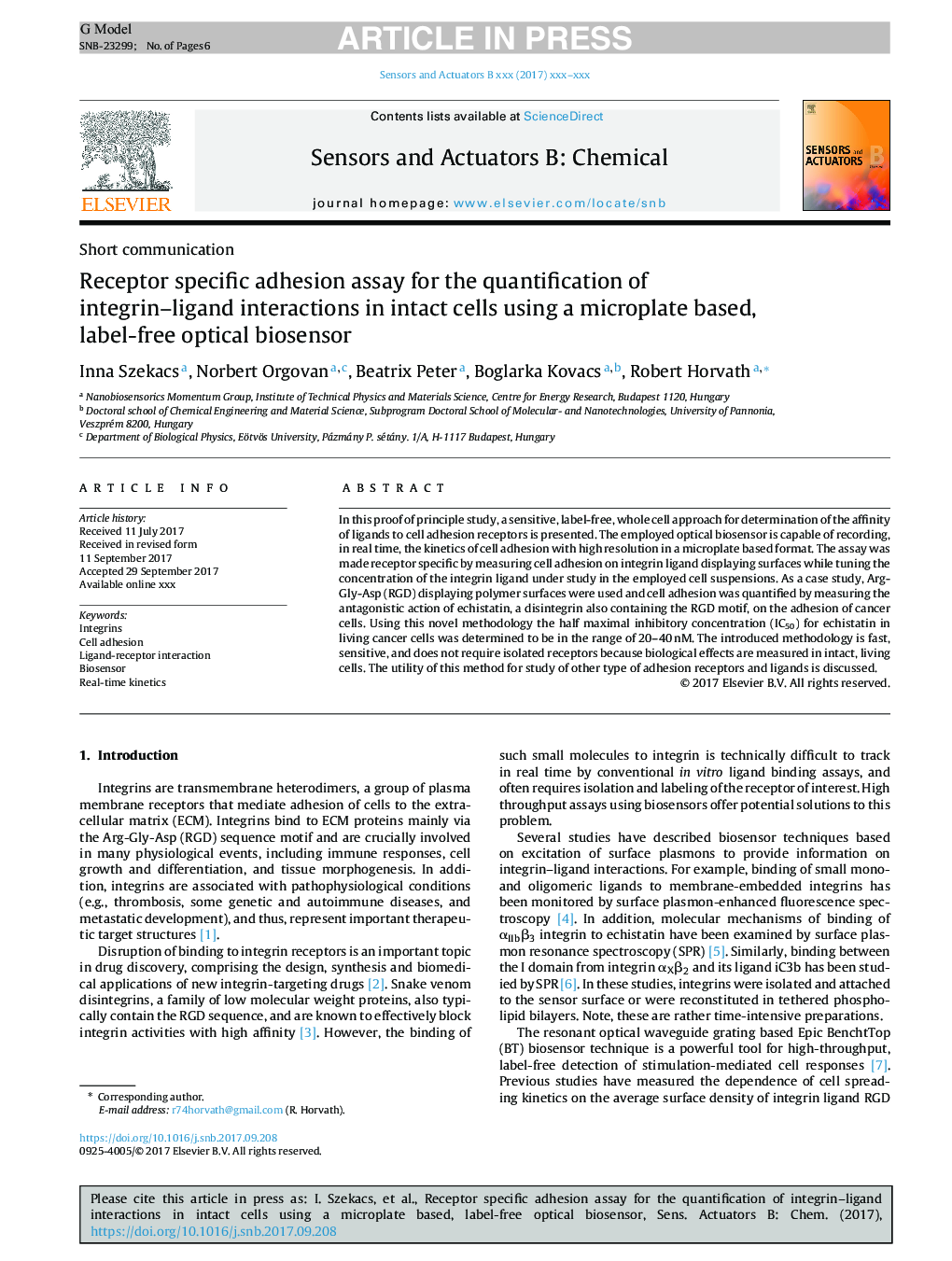| Article ID | Journal | Published Year | Pages | File Type |
|---|---|---|---|---|
| 7141730 | Sensors and Actuators B: Chemical | 2018 | 6 Pages |
Abstract
In this proof of principle study, a sensitive, label-free, whole cell approach for determination of the affinity of ligands to cell adhesion receptors is presented. The employed optical biosensor is capable of recording, in real time, the kinetics of cell adhesion with high resolution in a microplate based format. The assay was made receptor specific by measuring cell adhesion on integrin ligand displaying surfaces while tuning the concentration of the integrin ligand under study in the employed cell suspensions. As a case study, Arg-Gly-Asp (RGD) displaying polymer surfaces were used and cell adhesion was quantified by measuring the antagonistic action of echistatin, a disintegrin also containing the RGD motif, on the adhesion of cancer cells. Using this novel methodology the half maximal inhibitory concentration (IC50) for echistatin in living cancer cells was determined to be in the range of 20-40Â nM. The introduced methodology is fast, sensitive, and does not require isolated receptors because biological effects are measured in intact, living cells. The utility of this method for study of other type of adhesion receptors and ligands is discussed.
Related Topics
Physical Sciences and Engineering
Chemistry
Analytical Chemistry
Authors
Inna Szekacs, Norbert Orgovan, Beatrix Peter, Boglarka Kovacs, Robert Horvath,
